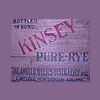Do you sometimes just plain enjoy a good old fashion Macro Beer better then anything
This topic has been inactive for at least 365 days, and is now closed. Please feel free to start a new thread on the subject!

By
dave ziegler
in General Non-Whiskey Alcohol
By using this site, you agree to our Terms of Use.
Recommended Posts